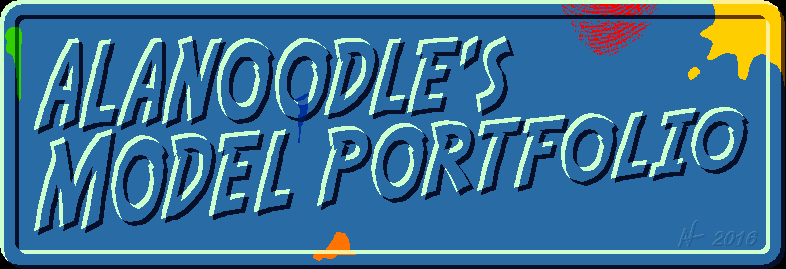



 Star Trek premiered in 1966 with episodes written by some of the prominent sci-fi writers of the day. The show introduced TV viewers to a Future History in which humans and aliens traveled among the stars in spaceships unlike any seen before in TV or movies.
I proudly hung the finished model from my bedroom ceiling and couldn't wait to talk about it with my friends. Of course, I was the weird one. Everyone else got bored with the kit before finishing it, relegating it to either a closet or the trash. I was the nerdy kid who thought building and painting scale models was fun and went on to build many more. A few years later I discovered that male rite of passage, July Fourth fireworks. It was only natural that I would eventually combine this new interest with my other hobby and blow up many of the models I had so carefully assembled and painted, including the Enterprise. (Did you know that an "Ash-Can" was a perfect fit inside a warp engine nacelle? I'll bet you do!) In 1974, I was an 18 year old college freshman who hadn't built any models since the seventh grade. Scale Modeling was ignored as interests shifted to girls, cars and guitar playing. Star Trek was canceled five years earlier but was more popular than ever thanks to syndication and reruns.
A friend from college was an avid fan of the show who had built the AMT
kit but left it unpainted. I suggested that the model could look better
with some color and offered to paint it. I took it home,
purchased a paint
brush
and a
few of the little square bottles of Testors enamel paint and spent a
couple of
evenings painting some details onto the model. I had a some fun with it
and was pretty happy with
the
way it came out. My friend was pleased enough that I was rewarded with
an Enterprise kit of my own.
The model which came to be known as the Star Drek Enterprise is mostly un-painted white plastic. Painted details were brushed on by hand and colors were chosen not because they were accurate but because I thought they looked good. Decals were applied directly to bare plastic without any overcoat, leading them to inevitably peel off. Extra windows and markings were applied freehand and were painted or penciled on with a minimal attempt at accuracy. Seams and gaps in the plastic were not filled or blended and show themselves proudly. Not a Best in Show but given my skill level at the time and the resources that were available, I think it came out pretty good. Years after building it, I still proudly display it alongside more recently built models. |

|
Building the Enterprise again re-kindled my interest in scale
modeling.
Over time, I was able to develop, expand and improve my modeling
skills. By 1986, I was fortunate enough to have turned those hobby
skills
into
job skills.
With dreams of building models for a Hollywood special-effects house, I worked as a professional Model Maker using my skills to build prototypes for a local manufacturer of retail store displays. Not glamorous but it was a steady, full-time job in a well equipped industrial-level model shop where I gained experience working with a wide selection of tools and materials. I had access to assorted plastic forming equipment along with a woodworking shop, a machine shop and a sheetmetal shop. I also had the good fortune to work alongside some very talented Model Makers who generously shared tips, techniques and ideas. My work environment motivated me to take on a variety of scale modeling projects and to experiment beyond building model kits out of the box. I'd thought about building another Enterprise using the skills I had acquired on the job but was hesitant, knowing what I wanted to do if I got my hands on the AMT kit again. It was sure to turn into a bigger project than I wanted to take on. At the November, 1988 exhibition of the Long Island Historical Miniatures Collectors' Society in Freeport, New York, I met Ed Dietrich. Ed brought photos of his model, the U.S.S. Lucifer, a modified AMT-Ertl Enterprise. (In 1983, AMT was bought by the Ertl company which continued to sell most of AMT's kits under the AMT-Ertl label.) Trekkies, Trekkers and Tech-Trekkies (or is it Trek-techies?) will recognize the Lucifer as the "Destroyer Type" variant on the design which was designated the Constitution Class Starship in Franz Joseph's book the Starfleet Technical Manual. (The name, Lucifer and registration number NCC-521 are also from the Tech Manual.) Ed did a "conversion" on the kit by relocating, replacing and modifying parts and added scratch-built details and custom made markings to create a great looking, one-of-a-kind starship.
Starship U.S.S. Lucifer photos used with permission
|
|
|
|
|
|
|
|
|
|
|
|
|
